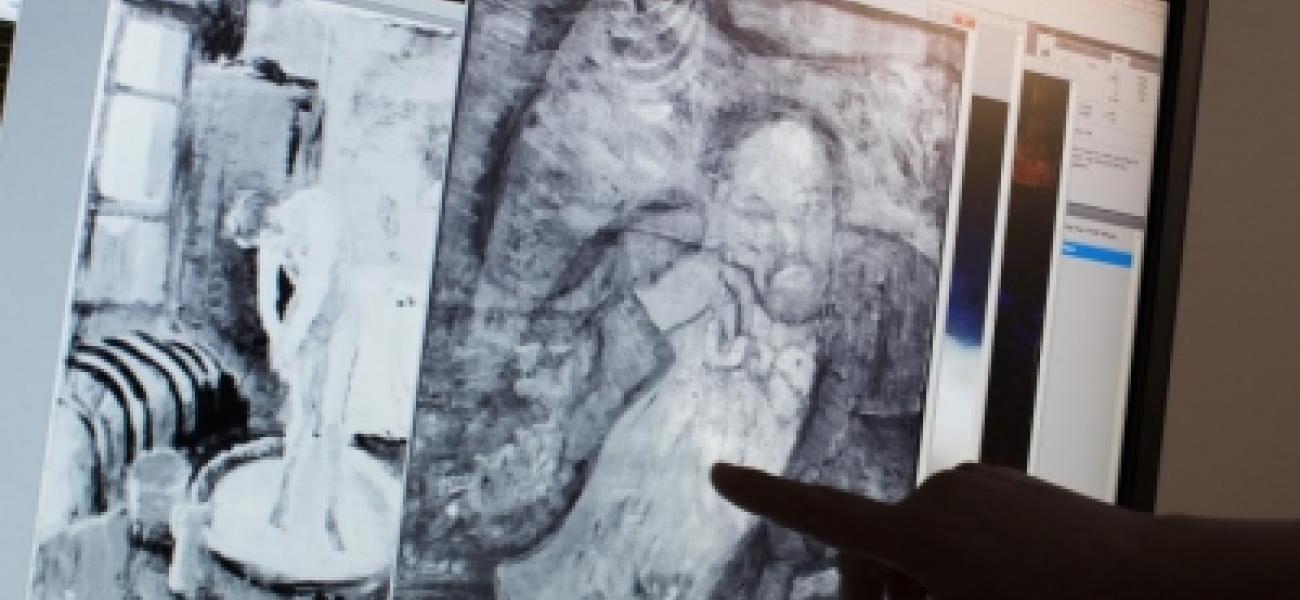SEE IT: Art experts find second painting hidden underneath Picasso masterpiece

Unexplained brush strokes had led experts to suspect there might be something under the surface of Pablo Picasso's 1901 work 'The Blue Room.' Now, advances in infrared imagery have helped them spot a painting of a bow-tied man under the painting of a woman.
Featured on nydailynews.com
Scientists and art experts have found a hidden painting beneath one of Pablo Picasso's first masterpieces, "The Blue Room," using advances in infrared imagery to reveal a bow-tied man with his face resting on his hand. Now the question that conservators at The Phillips Collection in Washington hope to answer is simply: Who is he?
It's a mystery that's fueling new research about the 1901 painting created early in Picasso's career while he was working in Paris at the start of his distinctive blue period of melancholy subjects.
Curators and conservators revealed their findings for the first time to The Associated Press last week. Over the past five years, experts from The Phillips Collection, National Gallery of Art, Cornell University and Delaware's Winterthur Museum have developed a clearer image of the mystery picture under the surface. It's a portrait of an unknown man painted in a vertical composition by one of the 20th century's great artists.
"It's really one of those moments that really makes what you do special," said Patricia Favero, the conservator at The Phillips Collection who pieced together the best infrared image yet of the man's face. "The second reaction was, 'well, who is it?' We're still working on answering that question."
In 2008, improved infrared imagery revealed for the first time a man's bearded face resting on his hand with three rings on his fingers. He's dressed in a jacket and bow tie. A technical analysis confirmed the hidden portrait is a work Picasso likely painted just before "The Blue Room," curators said. After the portrait was discovered, conservators have been using other technology to scan the painting for further insights.
Click here to read the full article.